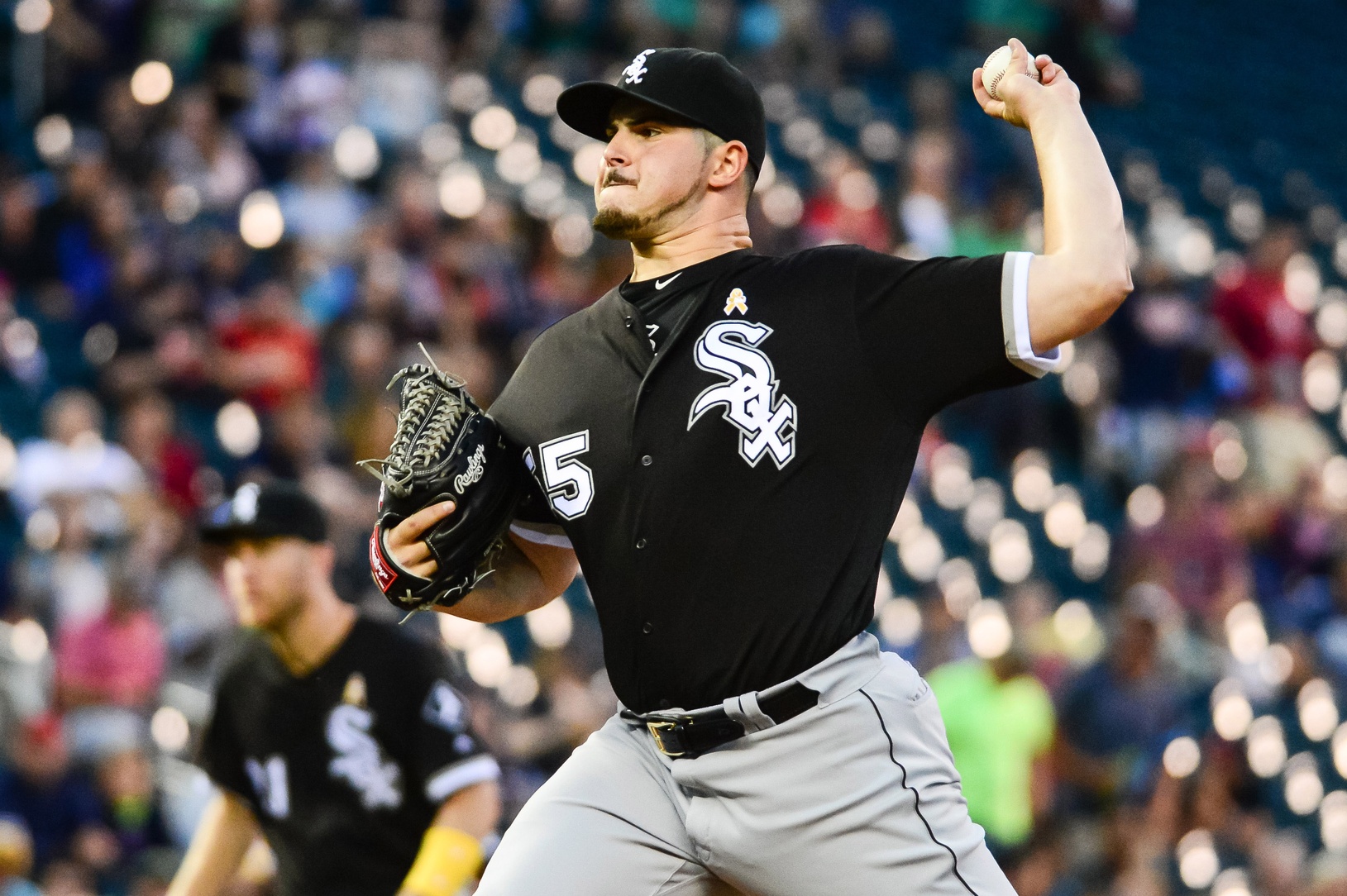The Baseball Prospectus stats team has unleashed a new measurement on the baseball world and now we are straggling behind, desperate to catch up.
Using a similar process to how they isolated catcher impact on extra strikes being called, they have isolated pitcher impact on the same result. In addition, Harry Pavlidis, Jeff Long and Jonathan Judge say that Called Strikes Above Average (CSAA), provides a serviceable guide to what pitchers are the best at hitting their spots. Pitchers who can consistently dot the edges of the zone with precision, will accumulate the most extra strike calls, the logic dictates.
Zach Davies, Josh Tomlin and Kyle Hendricks were three best pitchers in terms of CSAA in 2016, lending to the notion that soft tossers whose survival depends on avoiding the heart of the zone will dominate this category. Chris Sale and Jose Quintana were both above median in CSAA among the 144 pitchers who threw over 100 innings in 2016, but not exceptional, and the Sox don’t really have someone who fits the Davies mold on their starting staff.
Of course, it’s not hard to think of one recently. 2008 marks the year that the impact of PitchFX becomes readily apparent, and the rate of additional called strikes shrinks to something familiar to what we see now. It’s from this year through 2014 that Mark Buehrle finishes in the top-30 among pitchers with 100 or more innings every year, including finishing fourth in 2013 and pacing all of baseball in 2014.
With that affirming nod to our bias, let’s deal with more recent and current Sox starters. Sale was 41st in CSAA in 2016; unremarkable, but still solid and the best on the staff. But with his three pitches with ideal useful spin, and 15th-best called strike rate (after a big one-year jump reflective of his philosophy switch), he still fits the mold of a pitcher with elite stuff who does very well when he pounds the zone. Quintana is typically who we paint as the command specialist of the group, but he finished 40th in called strike rate and 45th in CSAA, so my takeaway from this is that we likely underrate how good his raw stuff is, and how effective his low-to-mid-90s and curveball combination is. He peaked at 29 out 145 pitchers in 2013, but his arsenal has only been strengthened since then.
Alternatively, the best thing that can be said about Carlos Rodon‘s CSAA is that it improved this year to 139th out of 144 after being dead last by nearly half a percentage point. That Rodon’s worst in baseball CSAA was -1.46 percent, you can see how bad being half a percentage point than the rest of the league is. Rodon is pounding the zone at least (34th in called strike rate in 2016) which is noticeable jump from his scattershot rookie season, but command rated so poorly puts him in a weird group at the bottom of the totem pole.
It’s filled with a collection of guys with stuff so electric that their command shortcomings don’t matter–Noah Syndergaard, Jake Arrieta, Yu Darvish and Max Scherzer are all in the bottom-15 in baseball in CSAA–and guys with big stuff who cannot seem to get out of their own way: Matt Moore, Dylan Bundy, Nate Eovaldi, Shelby Miller. The White Sox are staking a lot on Rodon being in that first group, and his 3.45 DRA in 2016 certainly suggests he’s already there. The “elite stuff” tag only works for Rodon if he develops a changeup that actually makes him dominant against righties, but this a different matter than what this data is showing us: Rodon’s command has upgraded from “very bad” to “fringy,” which is a level where others with his profile have been successful.
It’s hard to find a nugget for why Miguel Gonzalez was effective in 2016 in here. We know he has mediocre stuff, so filling up the zone (28th in called strike rate) with no command (125th in CSAA) seems like a recipe for more bombs than we saw in 2016. Perhaps this is how the difference in his stuff from standing tall with Cooper is the difference between him hanging in a major league rotation and being on the waiver wire. James Shields is reversed: he lived out of the zone (140th in called strikes) with decent command (50th), but trying to explain his grizzly season probably goes beyond simple statistical norms.
Sliding the inning minimums down to catch some of the new Sox prospect arms, Reynaldo Lopez is unsurprisingly below average at CSAA (281 out of 385 with over 40 innings) given that he’s fireballer with questions on his repeatability. While Lucas Giolito‘s 2016 debut was mostly disastrous and his 398 chances at the major league level does not even meet the sample size barrier discussed in BP’s article, he filled up the strike zone well enough (48.1 called strike rate) and was almost perfectly average in terms of command (-0.01 CSAA).
It won’t be until we’re desperate for content in mid-May that the benefit of a new measurement to point at excitedly will really reap content rewards, so pleased stay tuned, or spend your time bemoaning what became of John Danks‘ command.
Lead Image Credit: Jeffrey Becker // USA Today Sports Images

1 comment on “New command and control pitching metrics and the White Sox”
Comments are closed.